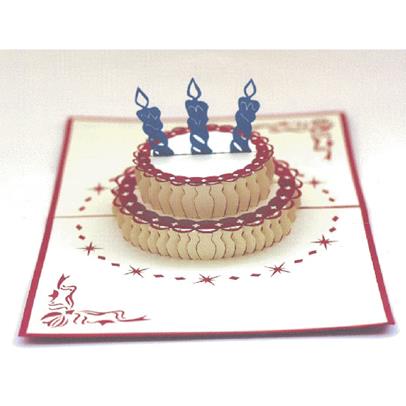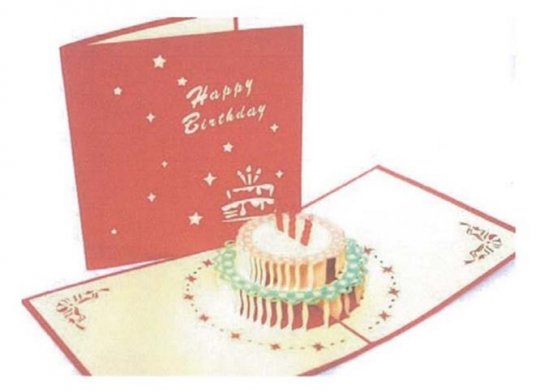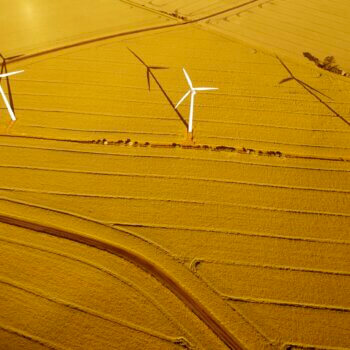
UK: Evidence too flimsy to invalidate registered designs for pop-up cards
23 September 2016, London
A recent request to invalidate fifteen UK registered designs for 3D pop-up greetings cards failed due to the insufficiency of the evidence provided. Photographic evidence was not robust and did not demonstrate that alleged prior art was in existence at the relevant date, and otherwise “flimsy” documentary hearsay evidence lacked credibility.
Background
This dispute centres on fifteen registered designs for pop-up 3D cards, including a decorative birthday cake, a sailing ship, and London landmark Big Ben. All the designs were registered in 2013 (UK registered design numbers 4031656 to 4031670), and all comprise both the front cover and the 3D pop-up element at the centre of the card (and various views thereof).
Dragon 007 Ltd (the Applicant) requested the invalidation of the Registered Designs (RDs) under section 1B(1) of the UK’s Registered Designs Act 1949 (as amended) on the basis that they were not novel and that they lacked individual character.
The Applicant’s director submitted that he started selling comparable cards in the UK in or around 2011, which were sourced directly from a company in China, and that these cards are now commonly available across Europe, Australia and Southeast Asia. He submitted as evidence a number of photographs to compare the cards he sells to those that are the subject of the RDs, and letters from his Chinese supplier and the market hall where he trades.

 UK registered design (No.403165)
UK registered design (No.403165)
 Alleged prior art
Alleged prior art
Decision
All of the applications for invalidation failed for a number of distinct reasons.
Firstly, the request to invalidate failed immediately, and unsurprisingly, in respect of five of the designs on the grounds that the Applicant did not provide representations of any alleged prior art.
In respect of the remaining ten registered designs, the Applicant identified alleged prior art and provided pictures of what he claimed were prior designs as compared against what he stated were the comparable contested registered designs. Some of the alleged prior art showed both a front cover (i.e. when the card is closed) and the internal pop-up element (i.e. when the card is open), however, two of the representations did not show the front cover. Given that the registered designs must be construed as consisting of the parts visible in the registration, and thus both the front cover and internal parts contribute to the design and its overall impression, these two representations of alleged prior art showing the internal element only were not sufficient to demonstrate that they shared the same overall impression as the respective registered designs. Further, it was held that the absence of the front cover from the alleged prior art was material, in particular, because this is the part of the product which will first be encountered by the informed user.
Turning to the question of whether the alleged prior art (which did show the front cover of the cards) could be relied upon for the remaining eight designs, whilst the examiner did not necessarily “disbelieve the applicant’s narrative” (i.e. that he had been selling pop-up cards since 2011 and thus before the application filing date of the registered designs, being the relevant date for assessment) the evidence was insufficient to even warrant a detailed analysis of whether the comparable cards were materially different – photographs of alleged prior art were taken after the relevant date, the signatories of the letters were not identifiable, one was not dated, and both appeared to have been solicited for the purposes of the hearing.
Comment
This decision serves as a useful reminder of the importance of obtaining robust evidence. In respect of prior designs, sufficient pictorial evidence (especially for designs with a number of distinct views) is needed together with proof that the design was indeed disclosed to the public before the priority date. Evidence should be dated, clearly signed by an identifiable individual and independently written.
Originally published in DesignWrites 9th Edition.







